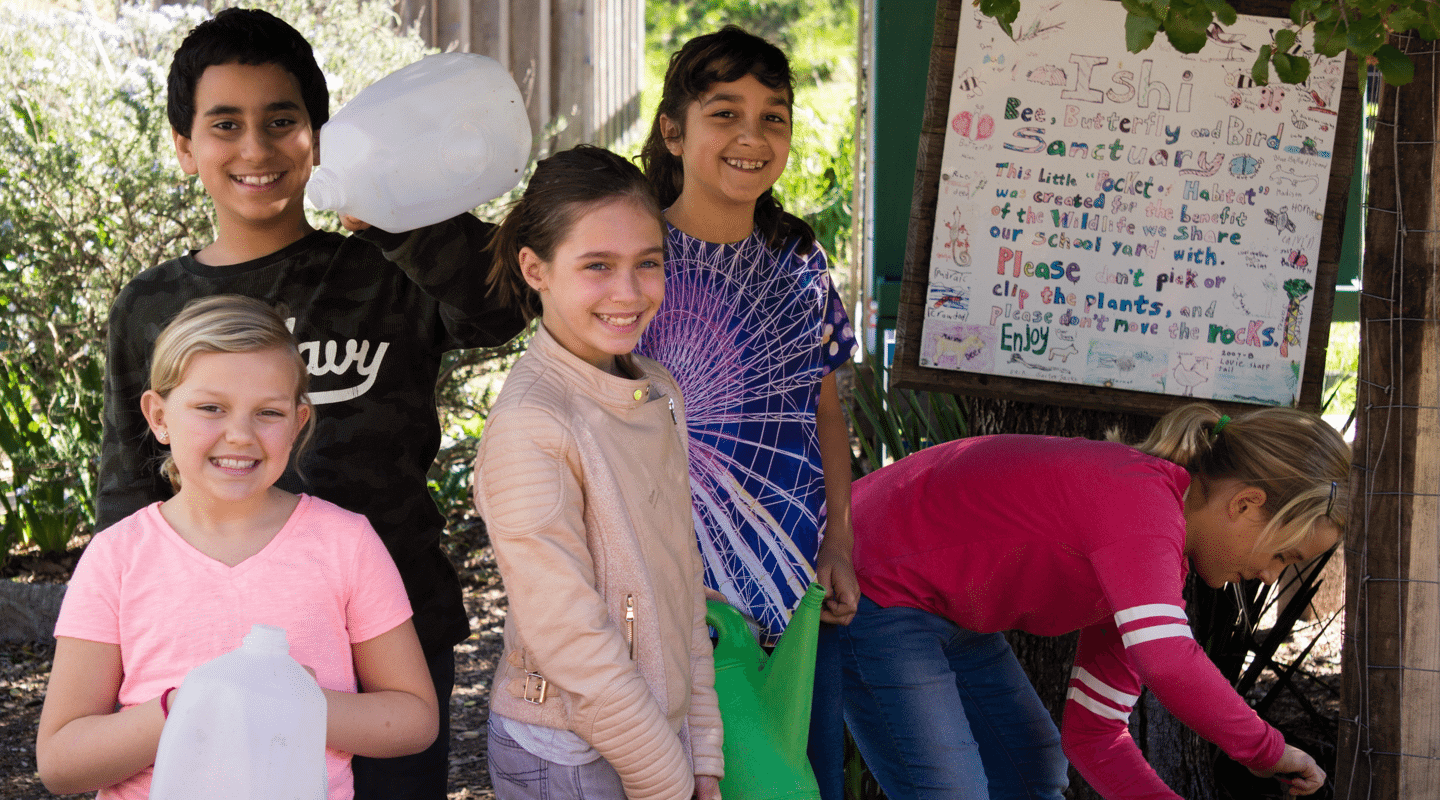Happy Earth Month!
April is an exciting time; flowers are blooming, the temperature is gradually increasing (then suddenly crashing, but hopefully increasing again!), and there is global excitement about taking care of our planet.
Earth Day is celebrated each year on April 22, and is acknowledged worldwide by people across faith, race, political affiliation, and economic status. It is a truly universal holiday that appeals to people of all ages. The first Earth Day took place on April 22, 1970 in cities across the United States, and was the idea of then-Senator Gaylord Nelson from Wisconsin. In 1990 Earth Day went global, mobilizing 200 million people in 141 countries, lifting environmental issues onto the world stage. As we approach our 50th anniversary in 2020, we reflect on the lessons we have learned, the success we have seen, and the challenges that are still ahead.

Before 1970, people who cared about the environment mainly focused on the preservation of land though the creation of parks and conservation areas to protect wildlife. The idea that there was more to environmentalism than the preservation of the world’s natural beauty was not fully understood until our actions started to impact our daily lives. The mass production and consumption experienced in the 1950s and 1960s created environmental concern regarding pollution, human health, and the quality of our natural resources. The news featured stories of rivers on fire, and smog so thick you couldn’t see city skylines. New research increased awareness about the harm of pesticides to humans and wildlife.
This newfound awareness, paired with concern, sparked nationwide demand for institutional-level change. The first Earth Day activated 20 million Americans from many walks of life, and is widely credited with launching the modern environmental movement. The creation of the Environmental Protection Agency and the passage of landmark legislation such as the Clean Air Act, the Clean Water Act, and the Endangered Species Act demonstrated a commitment to following through on the momentum that sprouted from Earth Day.
Earth Day Network (EDN) recognizes that the best way to inspire change is through education. Incorporating high-quality environmental education consistently in the K–12 school system is crucial to equip students with the knowledge, skills, and motivation to take action to protect their communities against climate change and other environmental concerns. Providing students and teachers with programs, resources, and opportunities to develop environmental literacy in every classroom internationally is a major goal for EDN. Our mission at EDN is to broaden, diversify, and mobilize the environmental movement worldwide.

For decades EDN has advocated for environmental and climate literacy in schools through several initiatives, including the National Civic Education Project; the development of the national Green Ribbon Schools program and other Green School initiatives; the creation of the first-ever interactive, iTextbook on climate change; and a wide range of environmental education curriculum resources focusing on sustainability, STEM education, climate, and green jobs.
This year we are focusing specifically on the issue of plastics pollution. We are mobilizing citizens across the world to End Plastic Pollution, including creating support for a global effort to eliminate single-use plastics and regulation for the disposal of plastics. EDN will educate millions of people about the risks associated with the use and improper disposal of plastics, including pollution of our oceans, water, and wildlife, and about the growing body of evidence that decomposing plastics are creating serious global problems. From poisoning and injuring marine life, to the ubiquitous presence of plastics in our food, to disrupting human hormones and causing major life-threatening diseases and early puberty, the exponential growth of plastics is threatening our survival.

We hope to build on the successes of California’s environmental literacy work and provide resources to help you keep the momentum going! To aid individuals, communities, organizations, and corporations in their journey to decrease their use of and reliance on plastic products, we have developed a series of tools to inform and inspire. All resources can be viewed and downloaded for free on our website, www.earthday.org.
- For educators, there is the Climate Education Week Toolkit. This web-based, cross-disciplinary resource includes a range of K–12 lesson plans and educational activities focused on the issue of plastics pollution.
- For faculty, staff, and students at higher education institutions, there is the MobilizeU Toolkit which shares information on how to host a Teach-In to address the issue of plastics pollution on campus and in the community. Teach-Ins, an educational strategy utilized at the first Earth Day, are designed to be practical, participatory, and oriented toward action.
- Individuals and families can use the Plastic Pollution Primer and Action Toolkit which includes information about plastic pollution and the Plastic Pollution Footprint Calculator—a tool to create your Personal Plastics Plan and to track your progress.
- Are you planning to hold an Earth Day activity with your students? Share your story with us and tag #EarthDay2018 #EndPlasticPollution to be part of the movement!
- You can register your events with us here and sign the petition to decrease your plastic use here.
April 22, 2020 will be the 50th anniversary of Earth Day, and we are already planning something BIG. We hope you will join us in the largest environmental movement in the world to commemorate the 50th anniversary of Earth Day. Stay tuned for more information on how you can be involved in our golden anniversary by following us on social media or signing up to receive our Educators Network newsletter.
Best wishes for a wonderful Earth Day!
Thank you to Madeleine Ergastolo, Earth Day Network Spring Intern, for assistance in writing and editing this piece.

